Marvel Comics: First Half of 1998, Part 2
Excalibur #118-123

Some of my favorite characters ended up in Excalibur, including Kitty Pryde, Nightcrawler, and Rahne Sinclair. They're mixed in with some characters that I find to be extremely bland, like Pete Wisdom and Brian Braddock. Sorta along the same lines, Excalibur as a title is a bit of a mixed bag, but I ultimately have quite a lot of affection for it.
Excalibur is a spin-off X-book that's mostly unaffected by the X-Men crossover events by virtue of it taking place in Great Britain. As a result, it's almost totally based in old-school superhero soap opera drama; there's a lot of focus on who's dating who. There's some shitty boys in this series - what Kitty and Rahne see in Pete and Deadlock is totally beyond me - but I like a lot of the girl characters, and I like the unabashed fun of the action setpieces, from a malfunctioning pirate simulation to a series of living nightmares. This shit is my kryptonite.
Fantastic Four vol 3 #1-8, Annual 1998
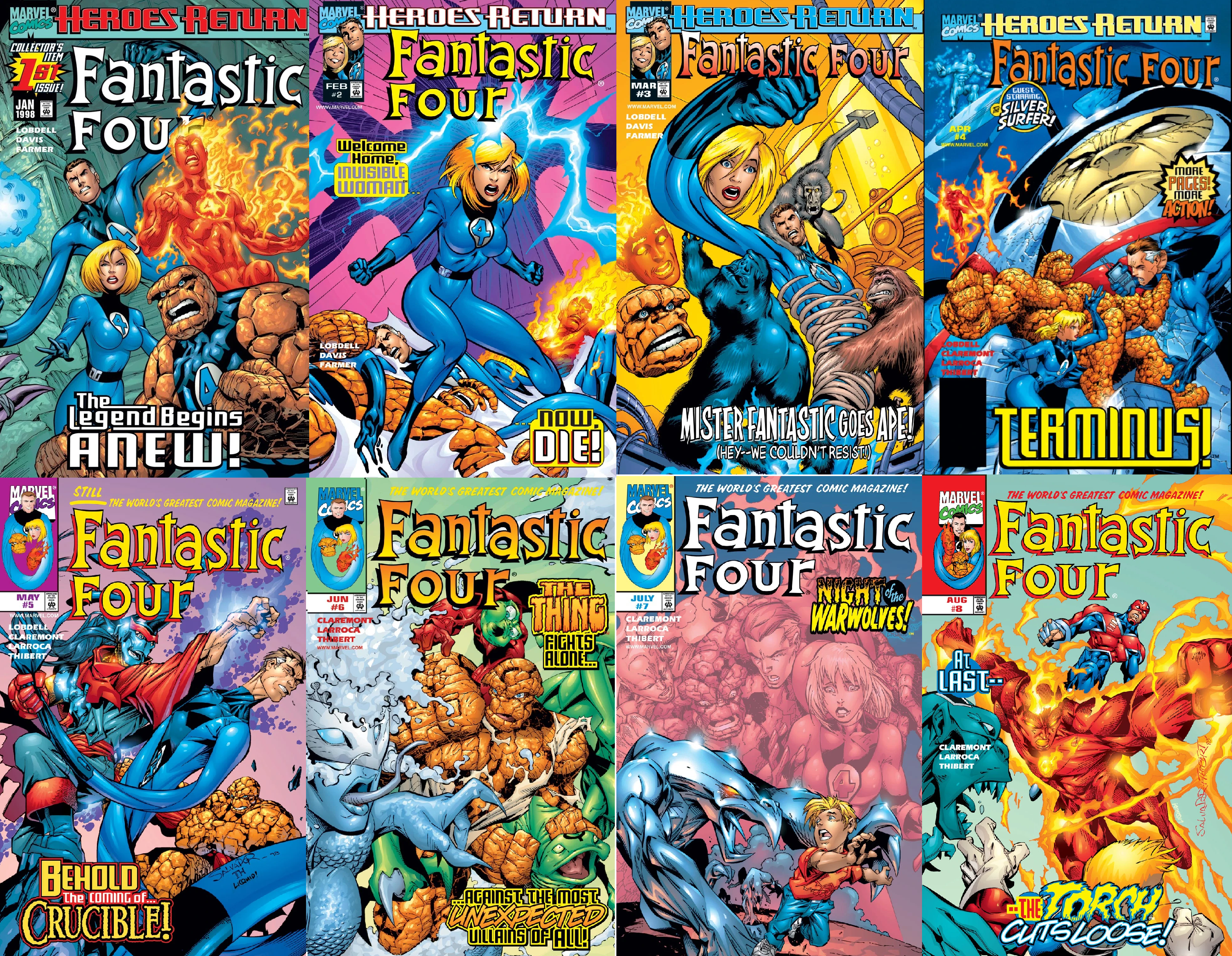
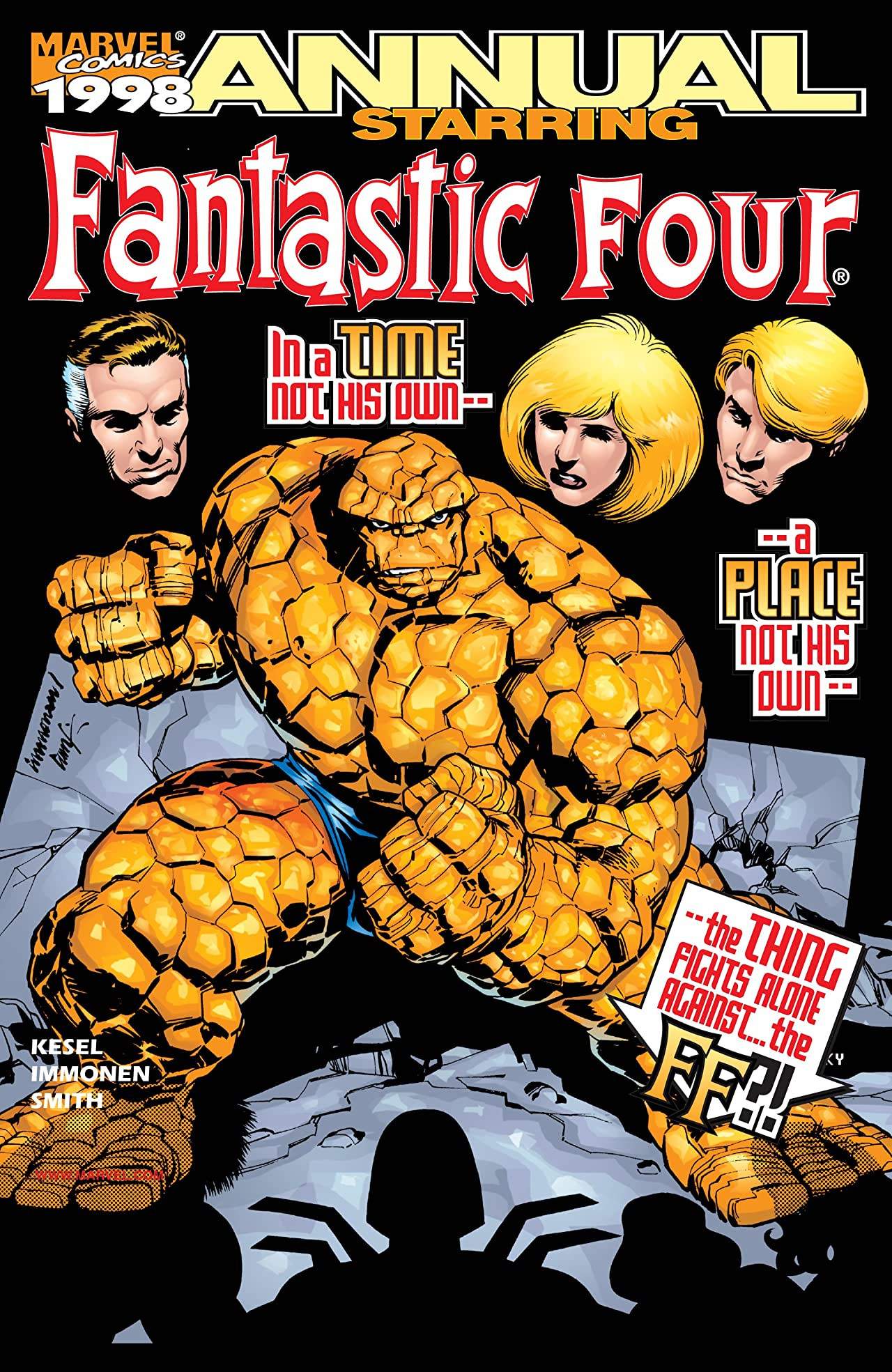
Five titles are officially associated with the Heroes Return relaunch / re-branding. The first is Avengers; the next three are solo books of the core Avengers members: Captain America, Iron Man, and Thor. The final Heroes Return title is Fantastic Four. It's the only title to change its entire creative team within the first few issues, which isn't a good sign.
After only three issues, writer Scott Lobdell is joined by Chris Claremont as a co-writer. By issue six, Scott's off the book and Chris is sole writer. I don't know if Marvel wasn't happy with Lobdell's direction, or if Lobdell had too many other projects and bowed out so Chris could give the book the attention it deserved.
Lobdell's issues have a particular interest in focusing on a single member of the Fantastic Four in each issue. Even the annual, released during Lobdell's tenure but written by Karl Kesel, is a one-shot mostly focused on the Thing. By contrast, Claremont's issues focus on the team coming together as a family and fighting off supervillains as a group. Neither approach is necessarily better, but it's an interesting contrast.
So far I haven't really found all that much to love about the title. The standout so far is that Kesel-penned annual, in which the Thing finds himself in an alternate reality where all the main Marvel superheroes have grown old. It's an engaging take on superheroes that's pretty uncommon. I've seen post-apocalyptic versions of Marvel superheroes elsewhere, like in the late 2000s epic Old Man Logan, but the FF annual just kinda shows them aging out of their roles in a very realistically human way. It's touching, and the only issue of the run so far that's really stuck with me.
Fury / Agent 13 #1-2
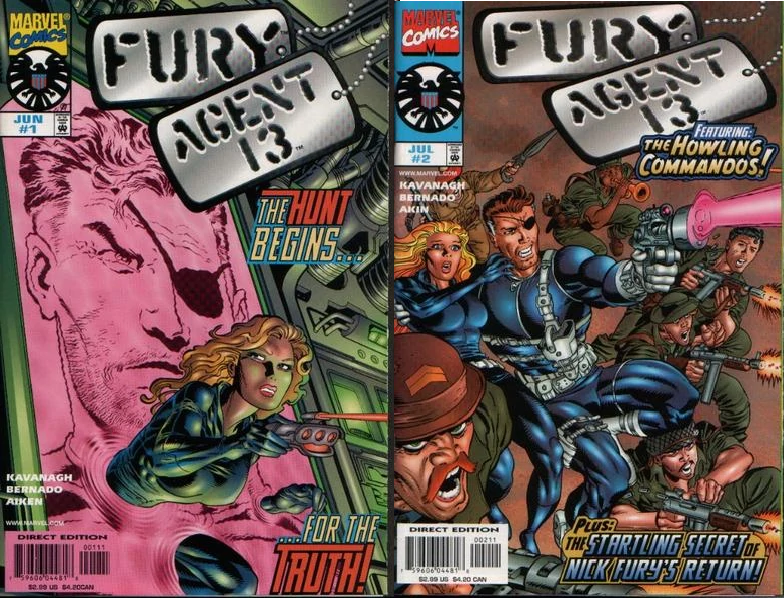
Nick Fury's been missing in the Marvel Comics continuity for some time now (he does that semi-frequently over the years), and this two-parter uses Agent 13 as a focal point to tell the story of how he gets back to the main Marvel Universe. It's a decently fun little event series, and I really hope both of these characters show up in the near future again.
Generation X #32-41
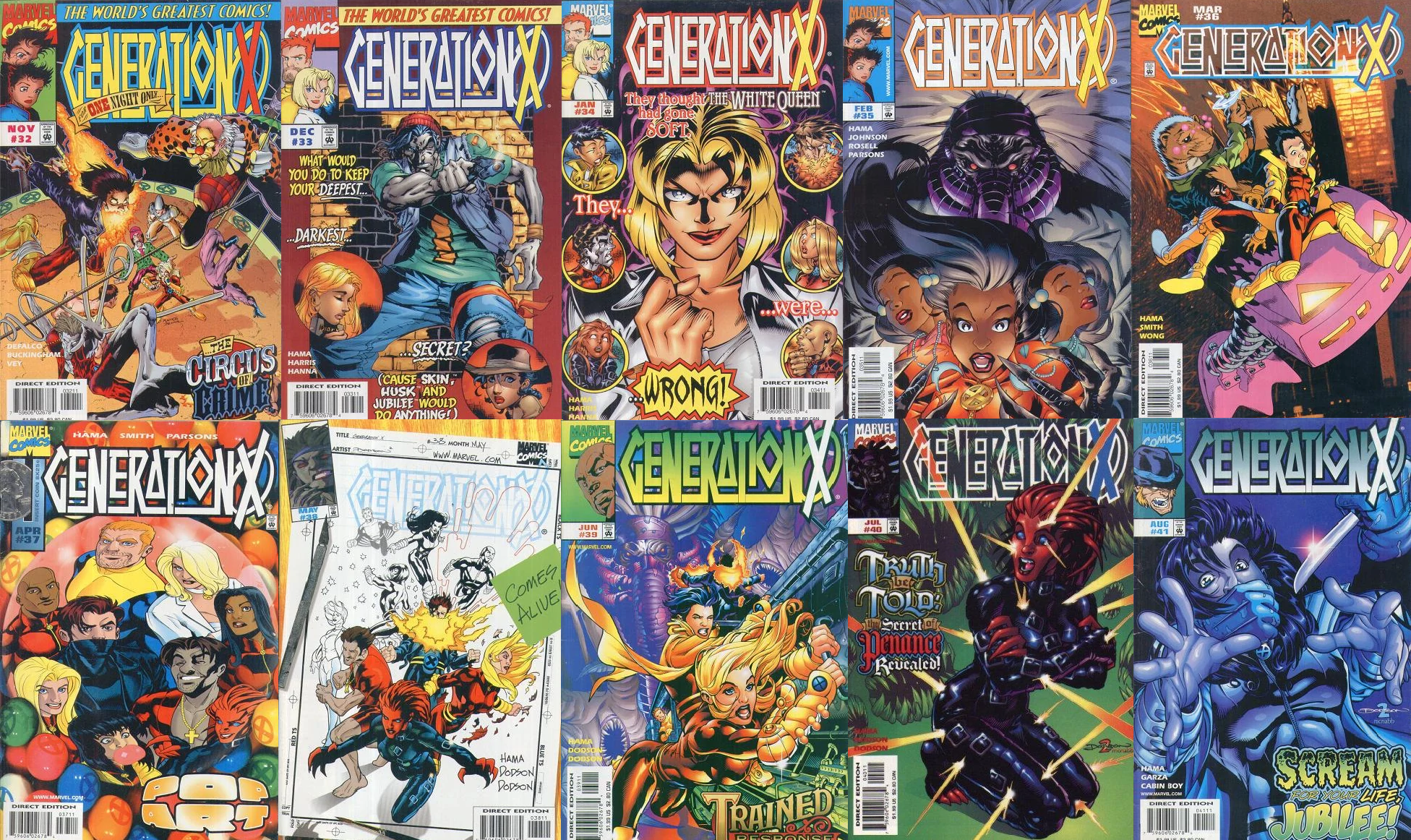
I was really excited for this one. Young superheroes are one of my favorite sub-genres, because the superhero genre is just so tailor-made to work well as a coming-of-age story for kids and teens. The X-Men have a reason built into their very premise to have a strong youth focus - I mean, their main homebase is a school - so I had high hopes for a title specifically focusing on the X-kids, especially one with Emma Frost and Jubilee in lead roles.
A few of the issues perfectly capture some of the jubilance and fun of being a kid with superpowers. The first issue I read is a DeFalco-penned story about Gen X foiling the Circus of Crime, famously a supervillain group that's about as intimidating as a bag of chips. There's a storyline of Gen X dealing with a kid who steals their things, and another one where they watch a scary movie and Jubilee has nightmares afterwards. Perfect.
Smack dab in the middle of all this is a long multi-part story about the kids hopping into a surreal fantasy land where nothing makes sense. Nothing about this is explained properly, so rather than being a fun romp, it's a tedious chore to read, and it goes on for ages. There's some cool stuff with a couple kids merging together to become a stronger superhero, but it gets lost in the noise. Too bad.
Generation X Underground Special #1
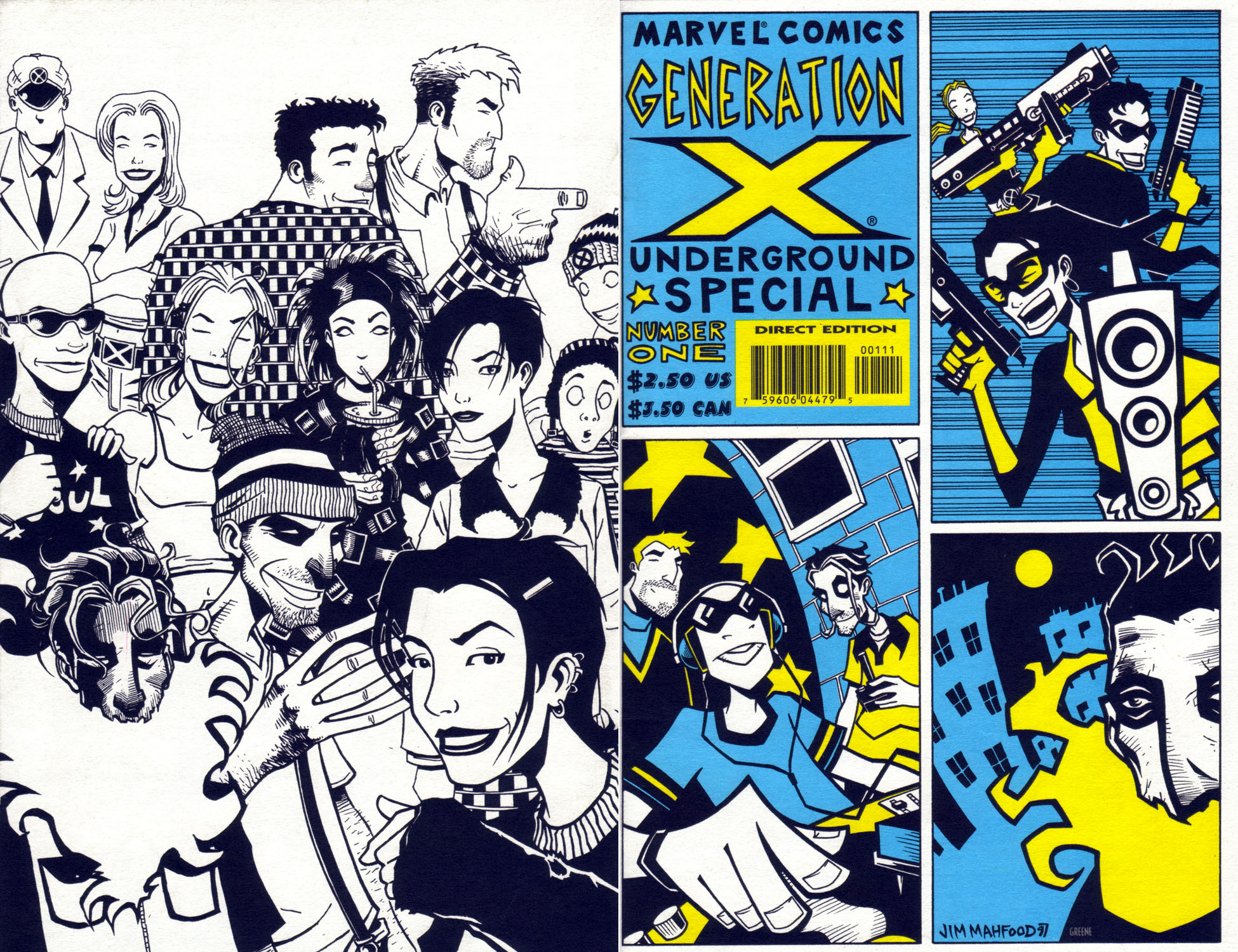
For some reason, Marvel gave an unusual underground artist the reins to make a zine-like black-and-white one-shot of short stories about the Gen X team. They range in quality, but the unusual presentation and art style are super fun.
Heroes for Hire #1-14
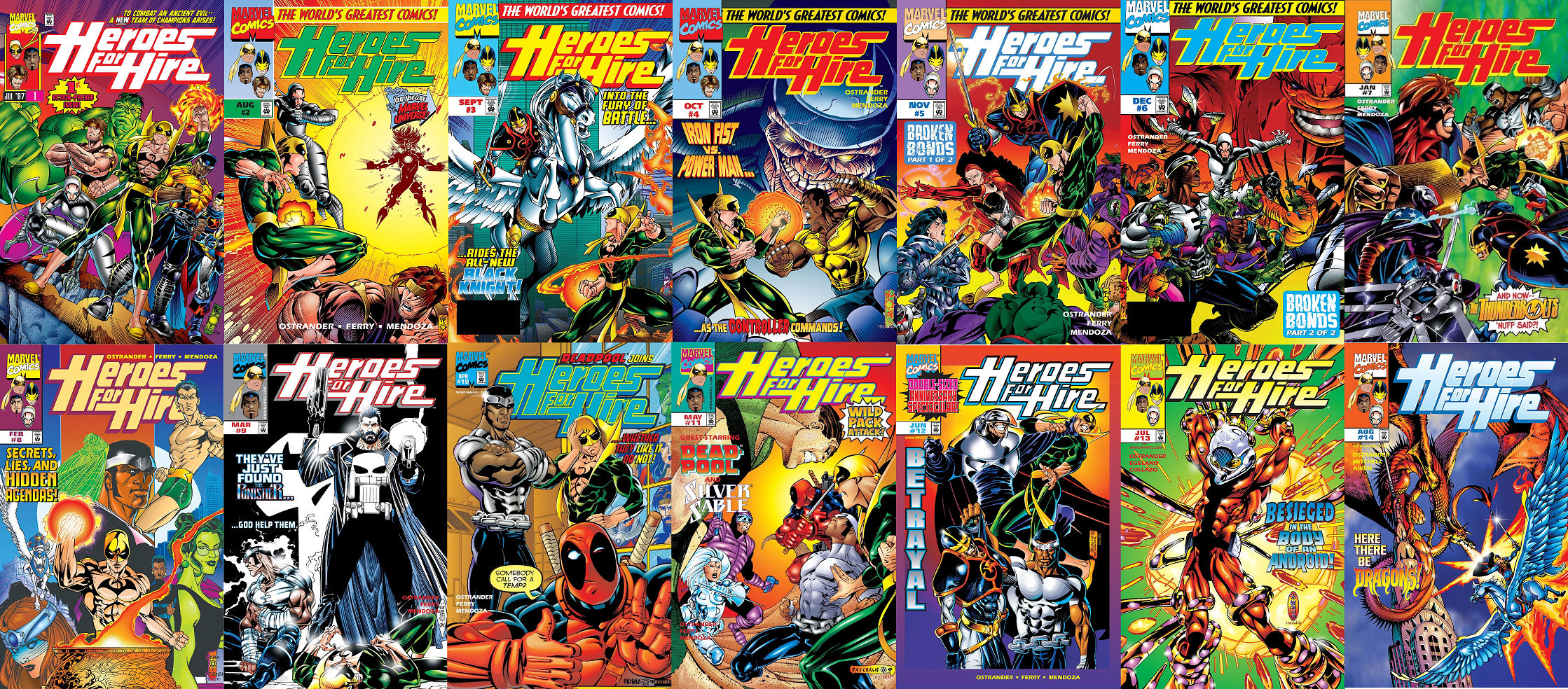
I had low expectations for this one, because none of the main cast of Heroes For Hire are among my favorite characters. Iron Fist and Hercules have kinda cool runs I read a bit of in the mid 2000s, but that's really it. Fascinatingly, Heroes For Hire ends up being one of the most fun romps of the year so far.
While Busiek's Avengers has had a pretty stable roster thus far, the Heroes (as penned by John Ostrander) have a roster that switches up something like every couple of issues. There's a LOT of characters coming from unusual places in the Marvel Universe - Scott Lang, She-Hulk, Black Knight, the Thunderbolts, the Punisher, and a new White Tiger all have prominent roles.
On top of that, the book's absolutely packed with plot. Since the Heroes For Hire are mercenaries, every character has their own agenda, and a lot of those agendas become significant sideplots. The book is never ever boring. Even the one-shot issues are fun: the latest one has Black Knight fighting a dragon in disguise as a Wall Street executive. Neat!
I'd say the book's one big misstep is how it handles Luke Cage. Early on in the series he's shown to be in league with the "Master of the World" (um, yuck??), a supervillain who's trying to depopulate the world. It's just all kinds of gross.
Incredible Hulk #460-467

Here's the very end of Peter David's long, 100+ issue run on the title. Hulk doesn't reboot immediately for the Heroes Return event, but Bruce's return from that event's pocket universe does kick off a new storyline where Banner and Hulk try to work together again. There's a lot about the run that's super heartwarming - Thunderbolt Ross decides to try being nice to Hulk, Bruce works with Reed Richards to help Rick Jones learn to walk again, and Bruce/Hulk's marriage with Betty Ross flourishes.
Then, abruptly, in Peter David's penultimate issue, Betty dies from radiation overexposure. It's extremely sudden, devastating to the characters, and a *huge* mood whiplash. This is the last thing that Peter David leaves the new writers to deal with, because his final issue depicts an alternate future in which Hulk and the others come to terms with Betty's death.
I have to give Peter David some credit for finding a way to end his run, more or less definitively, on his own terms; you could really call this issue "the end of the Hulk's story" if you really wanted to. But since it's an alternate future, this still leaves a way out for the new writers to continue Hulk's story in the present day, and even bring Betty back to life later if they want to. Still, I wish Peter David had left himself more room to let the characters really struggle with this death, instead of merely making it a shock twist at the end of his run.
Incredible Hulk & Sub-Mariner Annual 1998
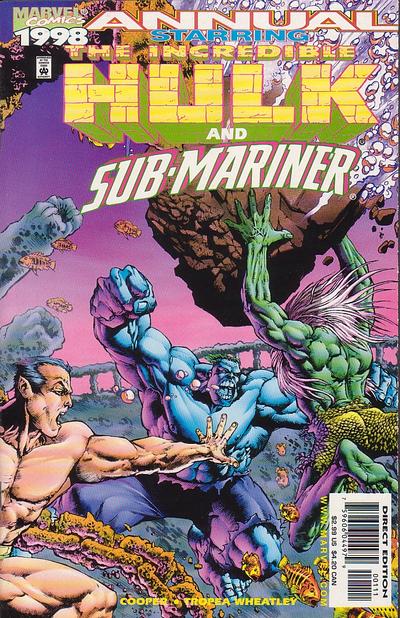
Namor's presence in Marvel Comics in 1998 is stronger than average - see Marvel Team-Up and Marvel Universe below for more on that. I really like Namor as a character - he's a grumpy little shit, but also has a strong moral compass and is fiercely protective of his family and his home. I love him.
This team-up continues Namor's story from Marvel Team-Up. Hulk is more of a guest-star, and is dealing with the immediate fallout of Betty's death in his own series. I kind of liked seeing these two damaged souls helping each other out, even if neither really did that much to directly address their own or each other's pain.
Iron Fist vol 3 #1-2
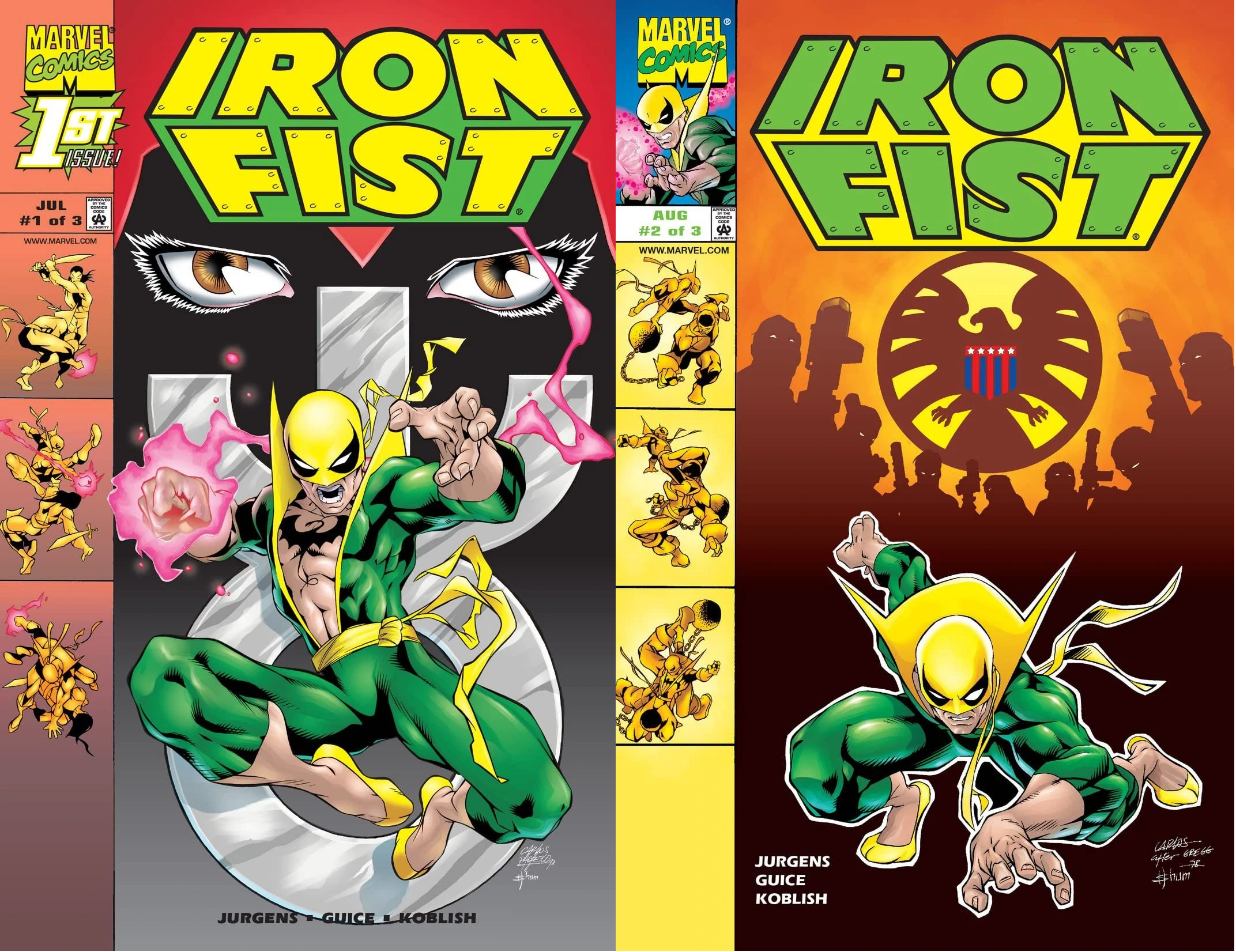
Like I said before, Iron Fist isn't really one of my favorite characters, and this miniseries is an incredibly basic take on him. The plot's a bit confusing too. We'll see if the wrap-up is any good, but... so far I'm not a fan.
Iron Man vol 3 #1-7

At his most basic, Iron Man is a guy who enjoys being a rich playboy way more than Bruce Wayne does, and often fights supervillains who are annoyed at Tony's company for one reason or another. That's more or less what we saw with the Iron Man movies, and it's also pretty much what we get here.
Now don't get me wrong: "incredibly basic Iron Man" is still reasonably entertaining, particularly the two-parter where Tony deals with a supervillain while trying to rescue an island town from an active volcano. I *liked* the Iron Man movies, and I had fun with this. But I don't know, this is Kurt Busiek on writing duties, and after Avengers and Thunderbolts I kind of expect more from him. He's not the only good writer I've seen stumble with Iron Man, either; and it's not bad writing, he just doesn't really have anything interesting to say with the character.
Iron Man: The Iron Age #1
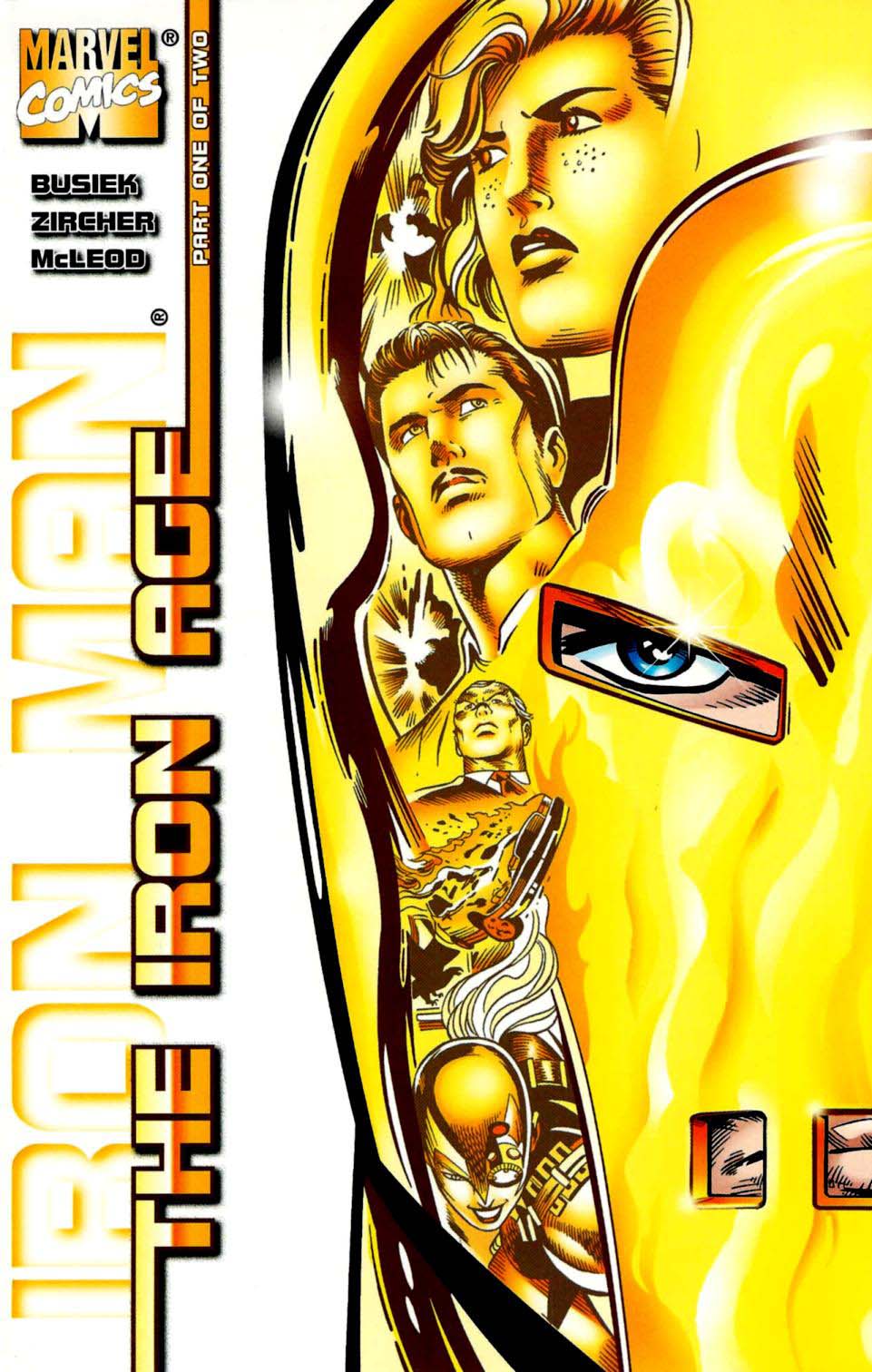
This is the first of a two-parter miniseries depicting Tony's early life as Iron Man, and how he first learned to balance his life inside and outside the suit, as narrated by Pepper Potts. Busiek makes the story feel epic, and lends it a fair bit of detail. I kind of wish Pepper had more to do, tho.
Journey Into Mystery #517-521

After Thor vanished into a pocket universe for the Heroes Reborn event, his series was rebranded to its original title, Journey Into Mystery, from when it was a pulp adventure series in the 1950s and early 1960s. While Thor's gone, Journey Into Mystery becomes a vehicle for short features about other characters who don't have their own series. These 1998 issues feature Black Widow in a three-parter, and vampire detective Hannibal King in a two-parter.
The Black Widow story, penned by Scott Lobdell, is really freaking good! An old woman tells a government agent about how Black Widow fought a group of neo-Nazi revolutionaries, and he slowly comes to realize that she's an unreliable narrator. It's got some great twists and turns, and it's the most fun I've ever had with Black Widow as a character. Strong stuff, and again, better than I've come to expect from Scott Lobdell.
The story about the vampire detective is *so* boring by comparison. Hannibal King isn't a memorable or likeable character, he's not very heroic, and I didn't like how he treated the female characters.
Ka-Zar vol 3 #1-16, Annual 1997
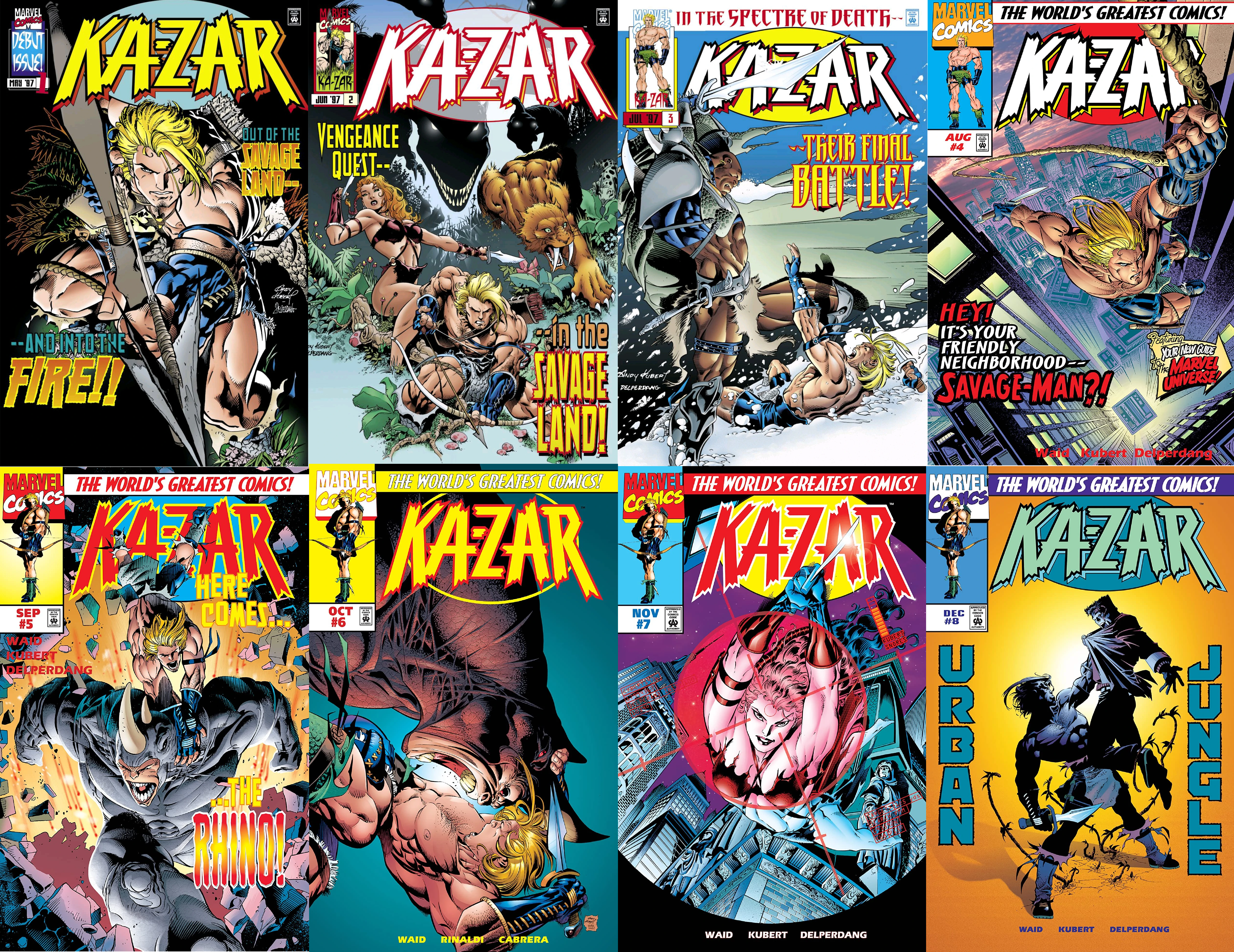
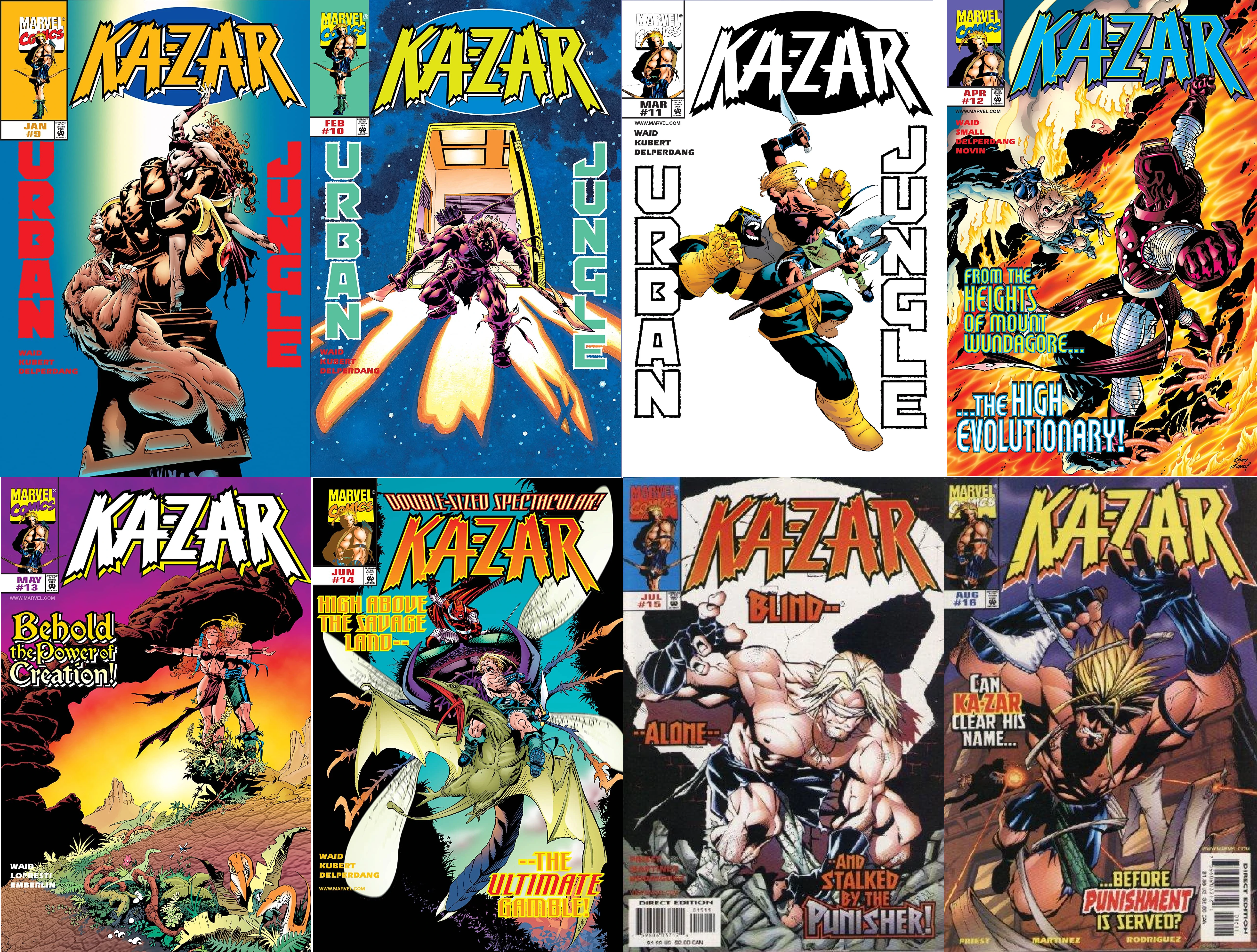
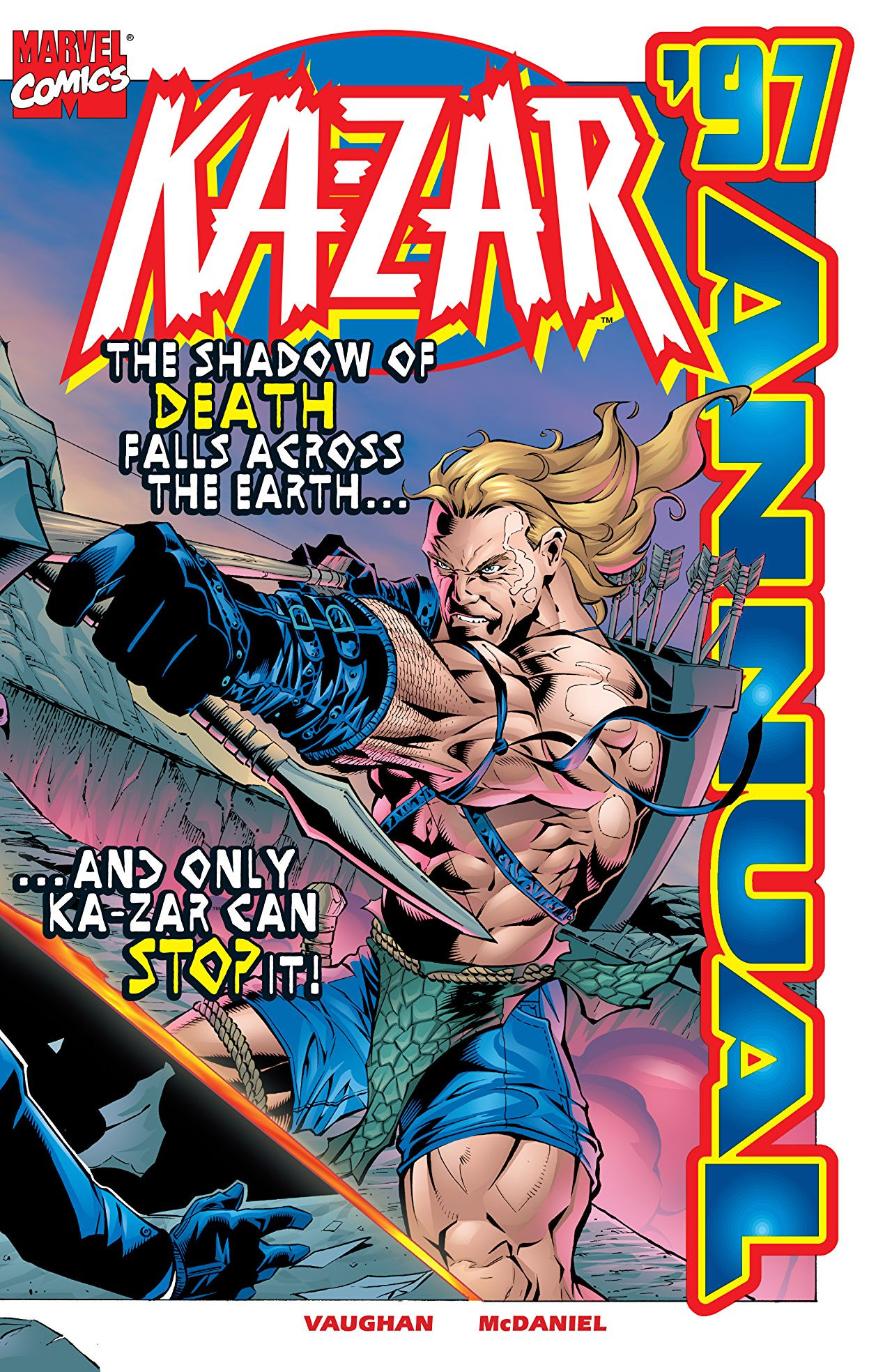
"There is no way in hellfire they'll be able to make a *Ka-Zar* ongoing series interesting," I thought to myself. Well, for some reason, Marvel put Mark Waid on the first fourteen issues, Christopher Priest on the next batch, and Brian K. Vaughan on the annual, and those are three names you don't fuck around with in the comics industry. So, as a natural result, Ka-Zar is surprisingly good.
I don't find anything particularly interesting about the premise, which is basically that Ka-Zar, a caveman-like superhero, lives with his wife Shanna the She-Devil in the Savage Land. (Lotta superheroes are married in the late 90s - Hulk and Betty, Peter and Mary Jane, Cyclops and Jean Grey... it's a whole thing.) Ka-Zar's a fun guest star, but in his own book?
After a fakeout where Ka-Zar's own brother is the villain for the first few issues, Mark Waid throws fucking Thanos into the mix, calling the shots and attempting to escape his cosmic prison. In the climax of that storyline, Thanos turns New York City into a jungle, and Ka-Zar must race to save his family and homeland before it's overtaken by the surrounding Antarctic tundra. It's a lot of fun.
Then Christopher Priest sends Ka-Zar back to NYC and gives him a language impediment, where he can't understand anybody in NYC for mysterious reasons. He also throws the Punisher at him. It's a tonal shift from Waid's run, but it's just as fun.
I think Ka-Zar's and Shanna's relationship is... not great. She gets mad at him for having the hobby of playing with tech from the modern world, like Gameboys and radios, because she's worried that their presence in the Savage Land will hurt their child. I think it's an unreasonable overreaction that taints my view of their relationship for the rest of the run. But that's the strongest critique I have of an overall solid series.
Machine Man & Bastion Annual 1998
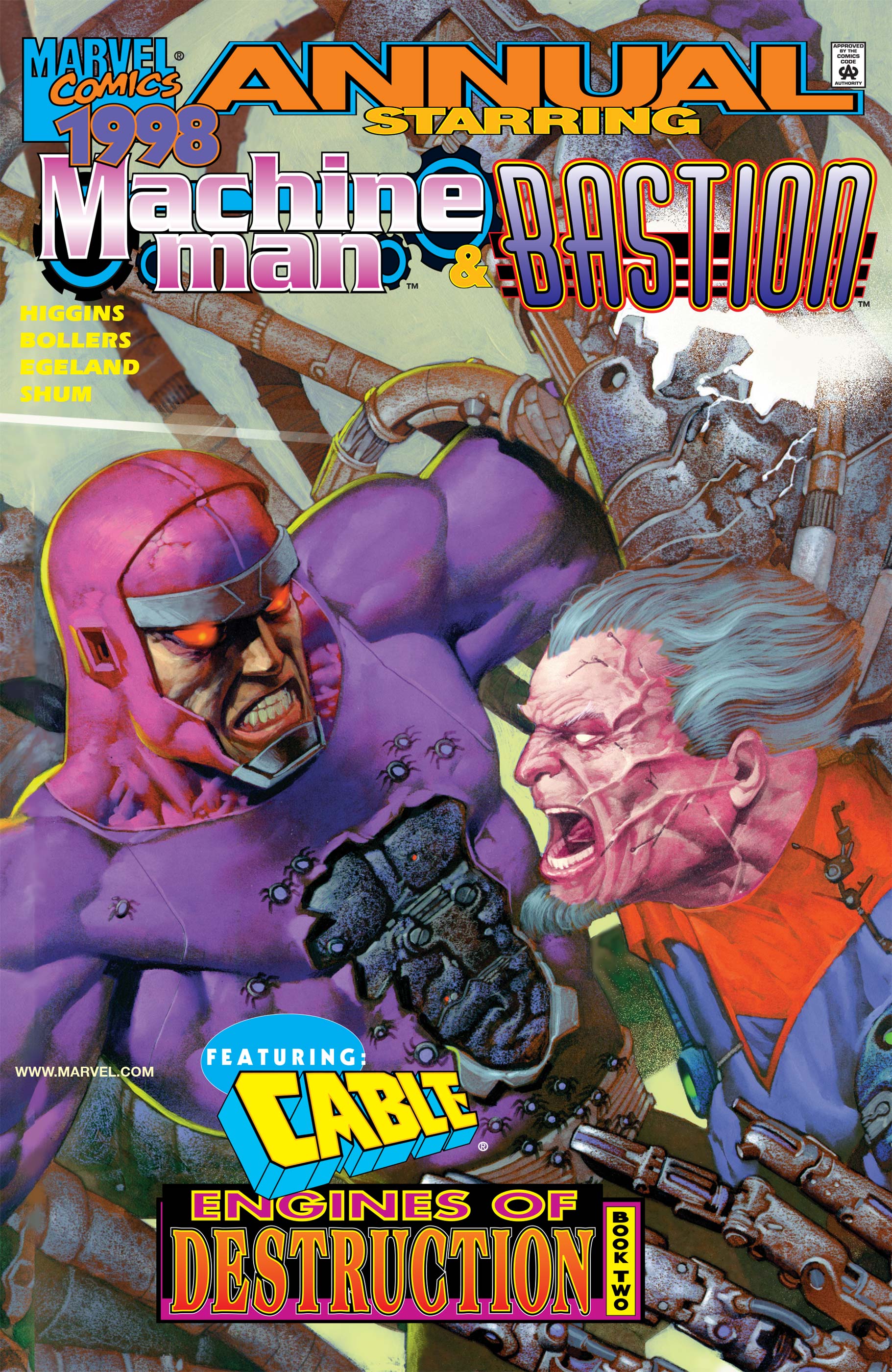
The writers of the Cable annual had a story long enough to fit into two issues, and with good reason - this is the comeuppance of a major villain from the X-Men's most recent event, "Operation Zero Tolerance." This displays a unique benefit of the way Marvel structures its 1998 annuals: even tho there's no Machine Man series to write an annual for, Marvel can present a "1998 Annual *Starring* Machine Man & Bastion." Anyway, the issue's pretty good and probably would've had a lot more impact for me if I'd read the relevant event.
Man-Thing vol 3 #1-8
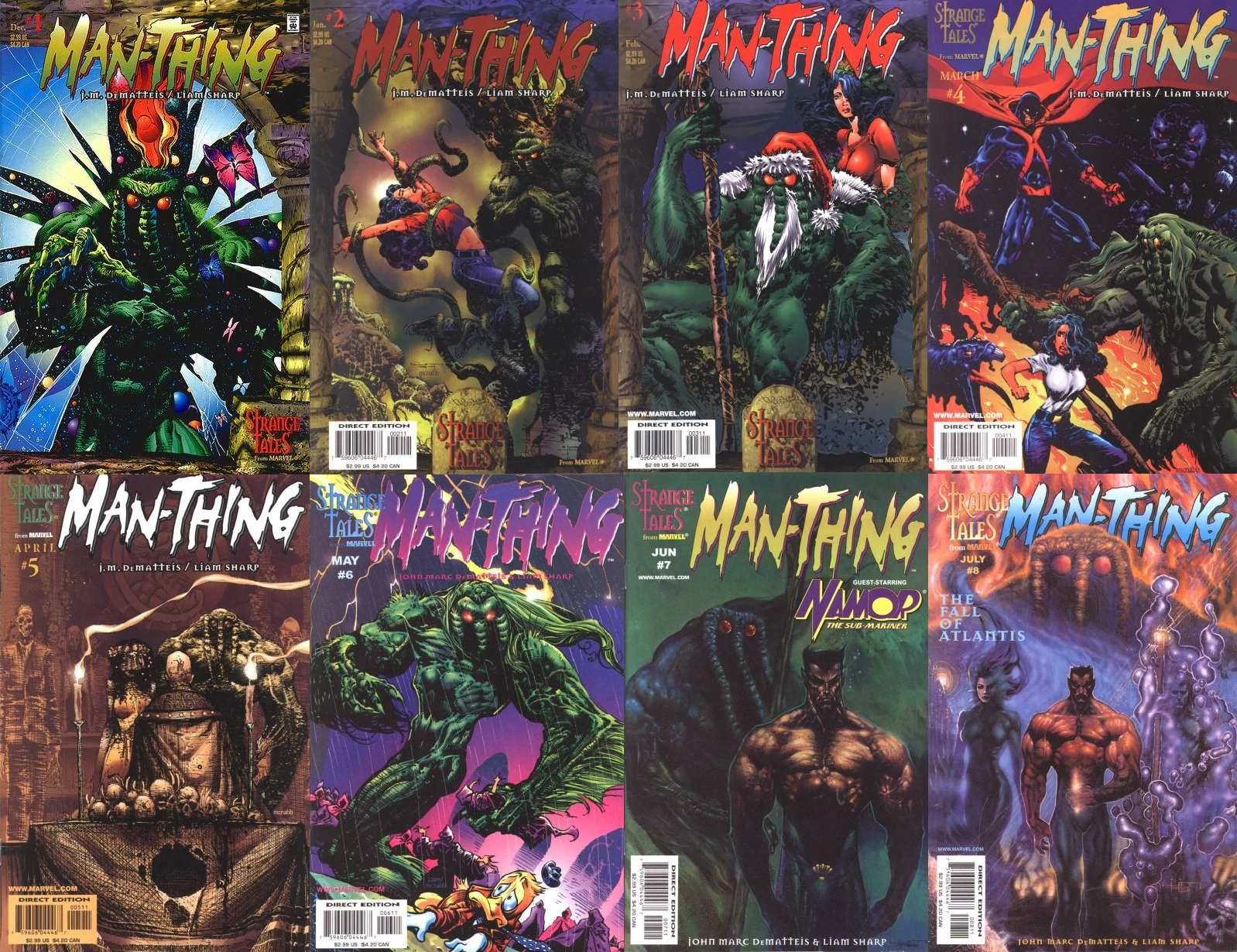
Between 1997 and 1998, Marvel briefly brought back the classic 1960s pulp title Strange Tales - not merely as a single series, but as an entire brand. The series Man-Thing and Werewolf By Night both have the logo at the top left corner of the cover, as does the "Strange Tales: Dark Corners" one-shot reviewed later in this overview.
It doesn't sound like it worked out super well, because both Man-Thing and Werewolf By Night were cancelled before their storylines could reach a conclusion. Both characters were brought back later in 1998 for a new Strange Tales miniseries that was intended to conclude their storylines, but that also was cancelled halfway thru its four-issue run. Which is a shame, cause Werewolf By Night is good, and Man-Thing is excellent.
J.M. DeMatteis has a hell of an imagination - over the course of eight issues, dreams and nightmares and hallucinatory visions and interdimensional visits and planetary travel all flow into each other. Into this mix DeMatteis throws in the occasional random Marvel character - Doctor Strange, Howard the Duck, and Namor all make appearances. It's an imaginative Sandman-esque dreamscape, flowing easily from one issue to another without much care for clearly delineated storyline beginnings and endings. None of it would work without Liam Sharp, who inks his own pencils and creates a very dark and unnatural art style.
Right at the core of the book there's an extended sequence at an asylum. Not only is it handled tactfully, it's a decent treatment of mental illness. Man-Thing helps a traumatized patient grapple with his demons, at which point the patient decides to start trying to help other patients heal too. I can't say enough good things about this book.